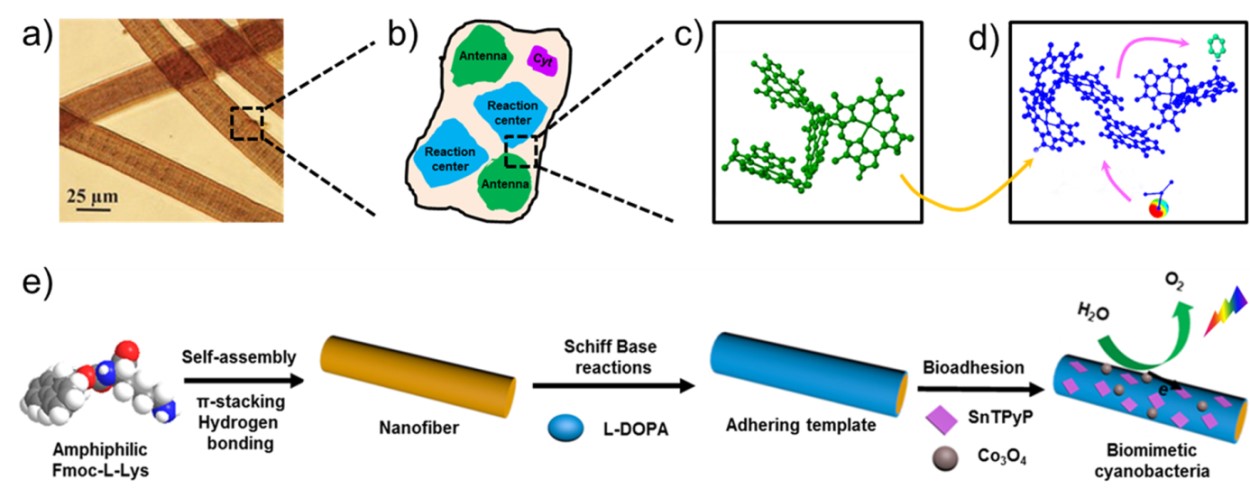We all live on oxygen that is produced by oxygenic photosynthesis. Although it is common in nature, the process is a big bottleneck in artificial photosynthetic paradigms. Over billions of years of evolution, photosynthetic organisms have developed nearly perfect oxygen-making “machine”. Mimicking its assembled structures and photosynthetic mechanisms is of great interest for solar energy utilization and deep insight into the complex photosynthetic oxygen evolution process.
Recently, the research group led by Prof. YAN xuehai at Institute of Process Engineering of Chinese Academy of Sciences developed a biomimetic oxygen-evolving photo bacteria model based on hierarchical self-organization of amino acids and porphyrins.
The researchers used 3,4-dihydroxyphenylalanine (DOPA) to chemically modify assembled amphiphilic amino acid fibers via Schiff base reaction, accompanied with the conversion of DOPA to DOPA melanin, containing hydroxyl and quinone species. The resulting templates were found to be adhesive to metal elements-containing components, such as metal ions, metallic oxide and metalloporphyrin.
The metalloporphyrin molecules on the adhering fibers are orderly arranged in a circle, analogous to light-harvesting antenna of purple bacteria, which facilities energy transfers.
Fluorescence analysis revealed that the fluorescence quenching of assembled metalloporphyrin was ~10 times higher than that in solution. The quinone species worked as Quinone-type reaction center for an effective charge separation.
After integration of metalloporphyrin and cobalt oxide nanoparticles, the hybrid fibers showed oxygen evolution under visible light irradiation, and the reaction rate was 3.6 times higher than that of free system.
Further material characterizations indicated that hybrid fibers had robust structure stability and excellent photo stability, which leaded to sustainable photocatalytic performance.
The results were published in a paper entitled "C"(https://pubs.acs.org/doi/abs/10.1021/acsnano.7b08215) online recently in the journal ACS Nano (https://pubs.acs.org/journal/ancac3) (2017, 11, 12840-12848).
This work was supported by National Natural Science Foundation of China, the Talent Fund of the Recruitment Program of Global Youth Experts, and the Key Research Program of the Frontier Sciences of the Chinese Academy of Sciences. Homepage: http://www.yan-assembly.org/

Fig. 1 Schematic illustration of the architecture of cyanobacteria: a) fibrous morphology b) photosystem-II c) antenna and d) reaction center; Schematic representation of the fabrication of oxygen-evolving biomimetic photosystem based on hierarchical self-organization of small biomolecules. (Image by LIU Kai)
Media Contact:
LI Xiangyu
International Cooperation Office, Institute of Process Engineering, Chinese Academy of Sciences, Beijing 100190, P. R. China.
E-mail: xiangyuli@ipe.ac.cn
Tel: 86-10-62551358
 Search
Search




 京公网安备110402500047号
京公网安备110402500047号